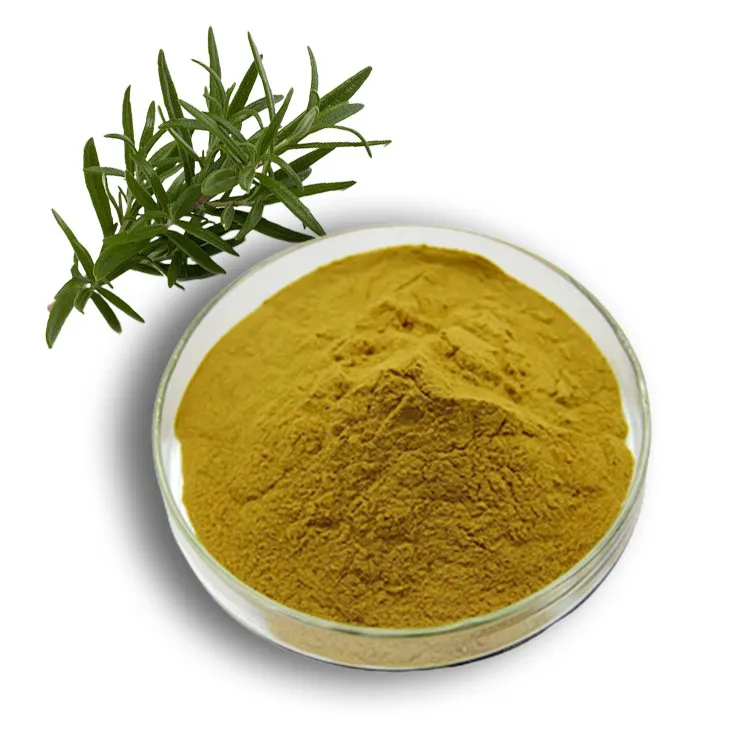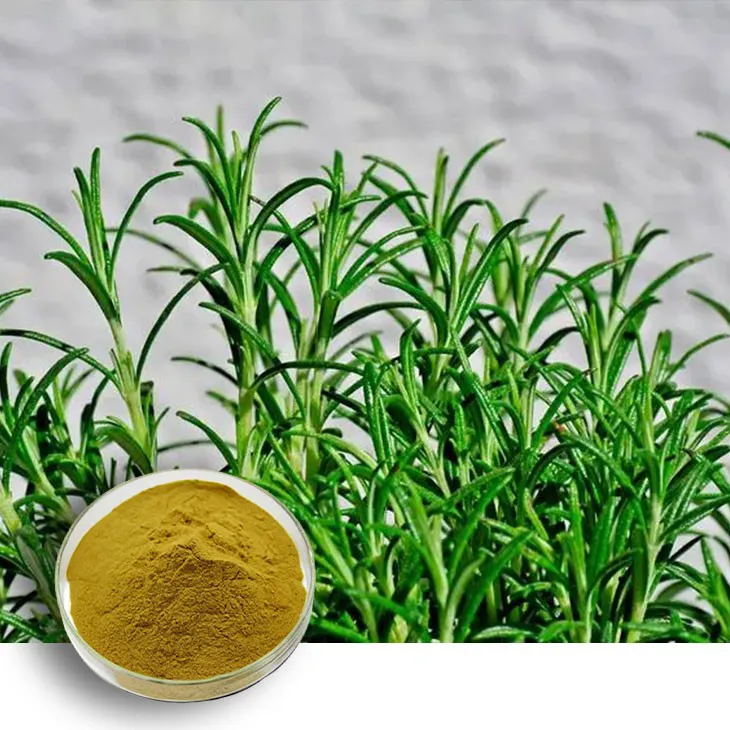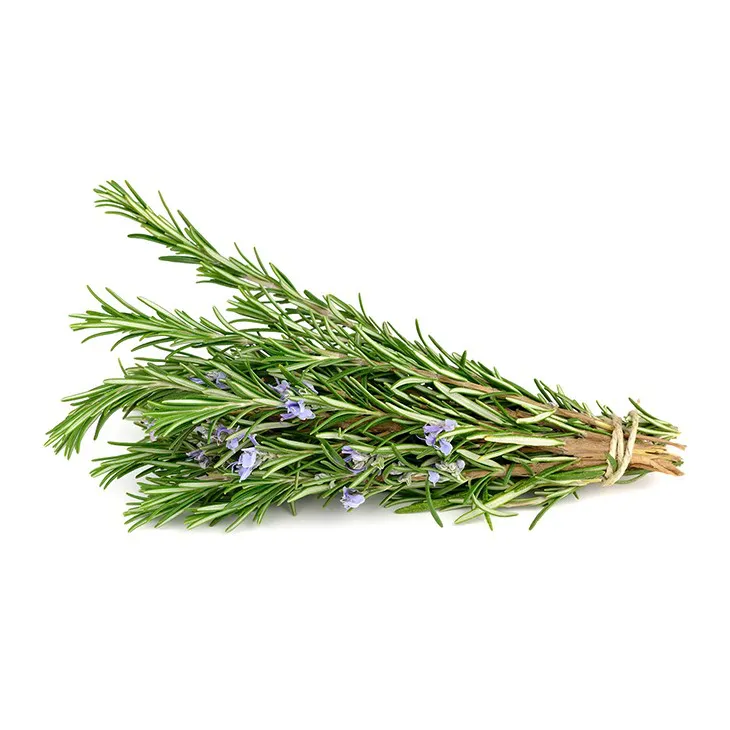- 0086-571-85302990
- sales@greenskybio.com
Optimal Bioavailability of Rosemary Extract.
2024-11-27

1. Introduction
Rosemary extract has been gaining significant attention in recent years due to its numerous health benefits. It is rich in antioxidants, anti - inflammatory compounds, and has potential applications in various fields such as food preservation, cosmetics, and medicine. However, to fully harness these benefits, it is crucial to understand and optimize its bioavailability. Bioavailability refers to the proportion of a substance that enters the circulation and is available at the site of action. In the case of Rosemary extract, achieving optimal bioavailability can enhance its effectiveness in promoting health and preventing diseases.

2. Chemical Components of Rosemary extract
Rosemary extract contains a variety of chemical components that contribute to its biological activities. The main components include:
- Rosmarinic acid: This is one of the most abundant phenolic compounds in rosemary extract. It has strong antioxidant and anti - inflammatory properties. Rosmarinic acid can scavenge free radicals, which are unstable molecules that can damage cells and contribute to various diseases.
- Carnosic acid: Another important component, carnosic acid has been shown to have antioxidant, anti - inflammatory, and neuroprotective effects. It can protect cells from oxidative stress and may play a role in preventing neurodegenerative diseases.
- Rosmaridiphenol: This compound also exhibits antioxidant properties and may contribute to the overall health - promoting effects of rosemary extract.

3. Interaction of Rosemary Extract Components with the Body
3.1 Absorption
The absorption of rosemary extract components in the body is a complex process. These compounds are typically absorbed in the small intestine. However, their absorption can be influenced by several factors:
- Food matrix: When rosemary extract is consumed as part of a food, the composition of the food can affect its absorption. For example, high - fat foods may enhance the absorption of lipophilic components of the extract, while fiber - rich foods may slow down the absorption process.
- Form of the extract: The physical form of the rosemary extract, such as powder, liquid, or encapsulated, can also impact absorption. Encapsulated forms may protect the active components from degradation in the stomach and improve their release in the small intestine.
3.2 Metabolism
Once absorbed, the components of rosemary extract are metabolized in the body. Metabolism can modify the chemical structure of these compounds, which may either enhance or reduce their biological activity. For example, some components may be conjugated with other molecules in the liver, which can affect their solubility and excretion.
3.3 Distribution and Excretion
After metabolism, the metabolites of rosemary extract are distributed throughout the body to their target tissues. The rate and extent of distribution depend on factors such as the lipophilicity of the compounds and the blood - flow to different organs. Eventually, these compounds are excreted from the body, mainly through the kidneys and feces.

4. Preparation for Optimal Bioavailability
4.1 Selection of Raw Materials
The quality of the raw materials used to produce rosemary extract is crucial for its bioavailability. High - quality rosemary plants, preferably grown in optimal conditions, should be selected. Factors such as the variety of rosemary, the soil quality, and the climate during growth can affect the composition of the extract. For example, rosemary grown in nutrient - rich soil may contain higher levels of active components.
4.2 Extraction Methods
Different extraction methods can result in extracts with different bioavailability. Common extraction methods include:
- Solvent extraction: This method uses solvents such as ethanol or water to extract the active components from rosemary. Ethanol - based extracts may have better bioavailability for some components as ethanol can dissolve lipophilic compounds effectively. However, the choice of solvent should also consider safety and regulatory requirements.
- Supercritical fluid extraction: This is a more advanced extraction method that uses supercritical carbon dioxide. It can produce extracts with high purity and potentially better bioavailability as it can preserve the integrity of the active components.

5. Ingestion and Bioavailability
5.1 Dosage
The dosage of rosemary extract is an important factor in achieving optimal bioavailability. Too low a dosage may not provide sufficient active components to produce the desired effects, while too high a dosage may lead to potential toxicity or reduced absorption due to saturation of transport mechanisms. The appropriate dosage may vary depending on factors such as the individual's age, health status, and the specific application of the extract.
5.2 Timing of Ingestion
The timing of ingestion can also influence bioavailability. For example, taking rosemary extract on an empty stomach may result in faster absorption, but it may also cause some gastrointestinal discomfort in some individuals. On the other hand, taking it with a meal may slow down absorption but can enhance the overall tolerance. The best timing may need to be determined on an individual basis.
5.3 Co - ingestion with Other Substances
Co - ingestion of rosemary extract with other substances can have both positive and negative effects on bioavailability. Some substances, such as certain vitamins or minerals, may enhance the absorption or activity of rosemary extract components. For example, vitamin C can act as a co - antioxidant and may potentiate the antioxidant effects of rosemary extract. However, some medications or other herbal supplements may interact with rosemary extract and reduce its bioavailability or cause adverse effects.
6. Strategies for Maximizing Bioavailability
To maximize the bioavailability of rosemary extract, the following strategies can be employed:
- Select high - quality raw materials and use appropriate extraction methods to obtain an extract with a high content of active components.
- Choose the optimal form of the extract, such as encapsulated forms for better protection and release in the small intestine.
- Determine the appropriate dosage and timing of ingestion based on individual factors.
- Be aware of potential interactions with other substances and avoid co - ingestion with substances that may reduce bioavailability or cause adverse effects.
7. Conclusion
Maximizing the bioavailability of rosemary extract is essential for fully exploiting its health - promoting potential. By understanding the chemical components of the extract, their interaction with the body, and implementing strategies from preparation to ingestion, it is possible to optimize its bioavailability. Future research should continue to explore new methods and factors that can further enhance the bioavailability of rosemary extract, paving the way for more effective applications in various fields.
FAQ:
What are the main chemical components in rosemary extract?
Rosemary extract contains various chemical components. The main ones are phenolic diterpenes such as carnosic acid and carnosol, as well as rosmarinic acid. These components contribute to its antioxidant, anti - inflammatory, and other beneficial properties.
How do the chemical components of rosemary extract interact with the body?
The phenolic diterpenes and rosmarinic acid in rosemary extract can interact with cells in multiple ways. For example, they can scavenge free radicals, which helps protect cells from oxidative damage. They may also modulate certain signaling pathways related to inflammation, potentially reducing inflammatory responses in the body.
What are the best ways to prepare rosemary extract for maximum bioavailability?
One approach is to use appropriate extraction methods. For instance, extraction with solvents like ethanol can effectively isolate the active components. Also, ensuring proper drying and processing techniques can help maintain the integrity of the active compounds. Another aspect is to consider formulating it in a way that is more easily absorbed, such as in the form of nanoparticles or microencapsulated products.
Does the form of ingestion affect the bioavailability of rosemary extract?
Yes, the form of ingestion can have an impact. For example, taking it in a liquid form may be absorbed more quickly compared to a solid tablet. However, if the solid form is formulated with appropriate excipients to enhance solubility, it can also have good bioavailability. Ingesting it with certain foods may also influence absorption, for instance, taking it with a fatty meal might enhance the absorption of lipid - soluble components in the rosemary extract.
Are there any factors that can reduce the bioavailability of rosemary extract?
Several factors can reduce bioavailability. Ingesting it with substances that can interact unfavorably, such as some medications that may cause chemical reactions with the components of rosemary extract. Also, improper storage leading to degradation of the active components can decrease bioavailability. Additionally, individual factors like a person's digestive health can play a role. If there are problems with digestion or absorption in the gut, it can affect how well the rosemary extract is utilized.
Related literature
- Bioavailability and Pharmacokinetics of Rosemary Extract"
- "Enhancing the Bioavailability of Phytochemicals in Rosemary Extract"
- "Interaction of Rosemary Extract Components with the Human Body: Implications for Bioavailability"
- ▶ Hesperidin
- ▶ Citrus Bioflavonoids
- ▶ Plant Extract
- ▶ lycopene
- ▶ Diosmin
- ▶ Grape seed extract
- ▶ Sea buckthorn Juice Powder
- ▶ Fruit Juice Powder
- ▶ Hops Extract
- ▶ Artichoke Extract
- ▶ Mushroom extract
- ▶ Astaxanthin
- ▶ Green Tea Extract
- ▶ Curcumin
- ▶ Horse Chestnut Extract
- ▶ Other Product
- ▶ Boswellia Serrata Extract
- ▶ Resveratrol
- ▶ Marigold Extract
- ▶ Grape Leaf Extract
- ▶ New Product
- ▶ Aminolevulinic acid
- ▶ Cranberry Extract
- ▶ Red Yeast Rice
- ▶ Red Wine Extract
-
Panax Ginseng Leaf Extract
2024-11-27
-
Aguaje Extract
2024-11-27
-
Polygonum Cuspidatum Extract
2024-11-27
-
Citrus Aurantium Extract
2024-11-27
-
Sophora Japonica Flower Extract
2024-11-27
-
Saponin Extract
2024-11-27
-
Sugarcane Extract
2024-11-27
-
Green Tea Extract
2024-11-27
-
Boswellia Serrata Extract
2024-11-27
-
Apricot Powder
2024-11-27





















